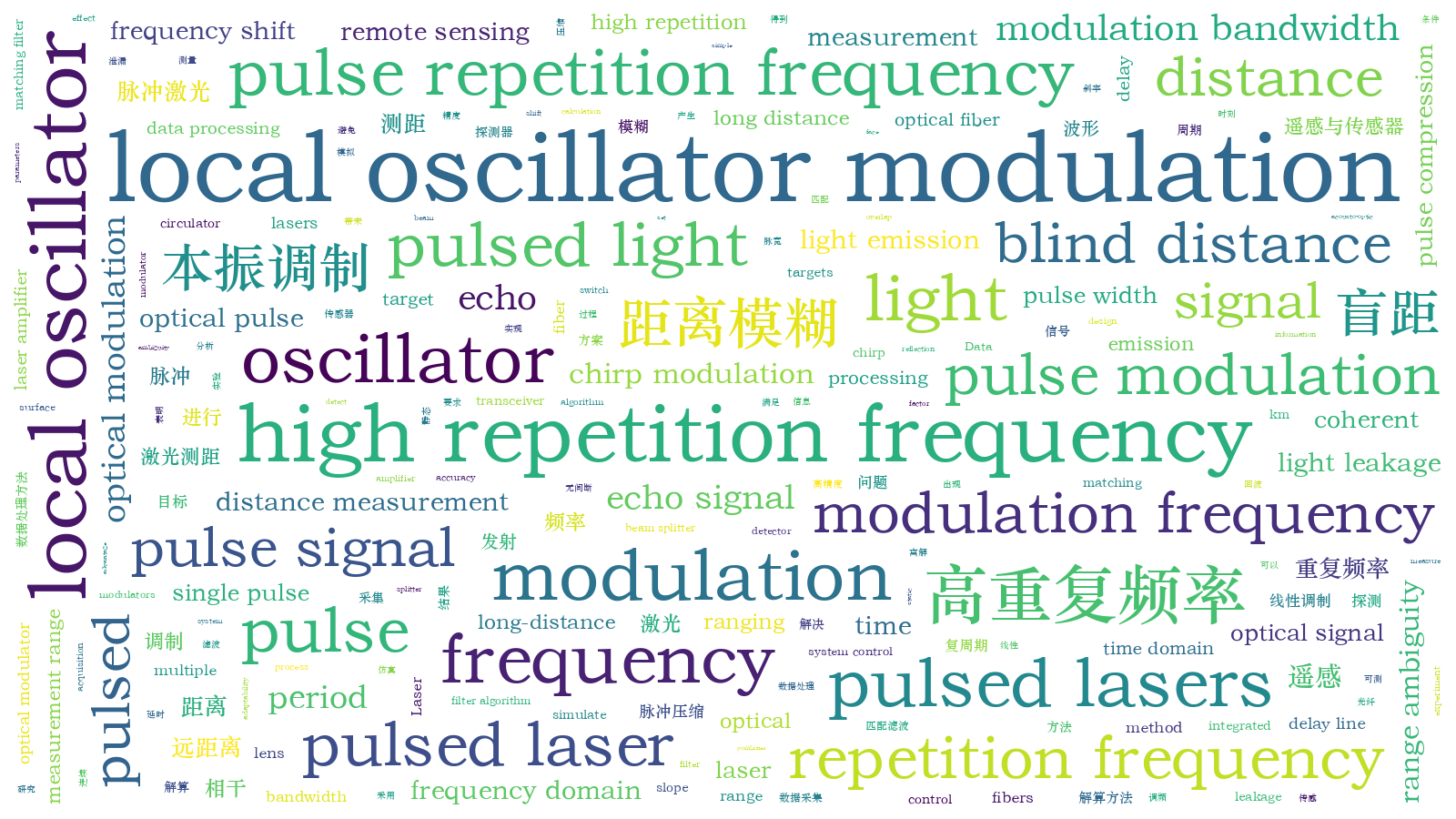本振调制型高重复频率远距离脉冲激光相干测距
When high repetition frequency integrated transceiver pulsed laser coherent method is utilized to measure static target distance, the maximum unambiguous distance caused by high repetition frequency is shortened on the one hand. On the other hand, reflected light is formed due to the reflection from the lens end face and the light leakage of the circulator at the time of emission. So the echo light will be submerged in the reflected light when it arrives during the pulse emission period. It is impossible to detect the echo light within the pulse emission time. Multiple blind range points and ambiguous distance problem appear. The traditional staggered pulse repetition frequency method requires frequency switching to obtain multiple sets of measurement data under different conditions. The control process is complicated and the echo light is still indistinguishable from the emitted light. A new scheme, high repetition frequency long-distance pulsed laser coherent ranging based on local oscillator modulation, is proposed in this paper. The maximum unambiguous distance determining factor is transferred from the pulse signal repetition frequency to the local oscillator modulation period. It expands the unambiguous range and solves the multiple blind distance points problem to make the measurement range continuous. There is no need to switch the repetition frequency, and the difficulty of system control is reduced. At the same time, requirements of the repetition frequency adaptability with the laser amplifier are reduced.
In pulsed laser coherent ranging, laser light is divided into two parts. One part is chopped and modulated to form pulsed light sent to the target, and the other is continuous local oscillator light. The proposed scheme mainly performs periodic chirp modulation on the continuous local oscillator light. And different pulse start frequencies are set according to the corresponding time relationship between the transmitted pulse signal and the local oscillator light. The modulation slopes of all pulse repetition frequencies are consistent. In order to make the measurement accuracy higher, the pulse compression method is used for data processing. So the slope of the optical pulse modulation is different from that of the local oscillator modulation. When the echo signal is coherent with the local oscillator signal, there will be two different effects. Within the local oscillator repetition period, one effect is that the pulse coherent signal with the same starting frequency is generated [Fig. 6(a)]. The other is that two different pulse coherent starting frequency signals are generated [Fig. 6(b)]. When the initial frequencies are different, the echo data are grouped according to the pulse repetition period that starts from the triggering time of the local oscillator modulation. The matching results of each group are analyzed. The number of pulses with the first initial frequency and the pulse compression results with the second initial frequency are recorded. Based on the recorded results, the target distance can be obtained by simple calculation.
In experiments, three acousto-optic modulators (AOMs) are mainly used. The first AOM is used as a pulse signal optical modulator. Its design parameters include 200 MHz initial frequency,
Two measurement schemes with and without the local oscillator modulation are compared. Data acquisition and processing are performed. Relevant measurement results are obtained (Tables 3 and 4). With the local oscillator modulation high repetition frequency ranging scheme, the measured round-trip distances are 7.9608 km, 36.5156 km, and 58.1052 km, respectively. The corresponding accuracies are 2.7274 m, 5.1906 m, and 7.819 m. Since the 36.5 km delay line exceeds 19.2 km corresponding to a pulse repetition period, the measured distance based on the scheme without local oscillator modulation is 17.3 km (Table 3). An ambiguity phenomenon occurs and the target cannot be accurately measured. However, the measured distance 36.5 km can be obtained based on the local oscillator modulation, which matches the actual length of the optical fiber. Under the experimental condition of 58.1 km delay line, the data processing result is 0 based on the scheme without local oscillator modulation. The reason is that the echo light and the emitted light partially overlap in the time domain. The measurement scheme with local oscillator modulation shows advantage in frequency domain. Although these two pulsed lasers illuminate the detector surface simultaneously, their information in frequency domain is separated. The echo optical signal can be effectively distinguished through the matching filter algorithm. The specific distance value of 58.1052 km is obtained.
Some problems exist in the high repetition frequency integrated transceiver pulsed laser coherent ranging, including that the unambiguous distance is short and the echo signal light cannot be received normally at the moment of emission. The local oscillator modulation pulsed laser coherent ranging based on local oscillator and signal double-chirp modulation proposed in this paper overcomes the short unambiguous distance and multiple blind distance points. The measurement results with 36.5 km and 58.1 km delay fibers are obtained with the conditions including
吴姿妍, 眭晓林, 刘波, 赵晓龙, 梅博, 张奕康, 李丰君. 本振调制型高重复频率远距离脉冲激光相干测距[J]. 中国激光, 2024, 51(6): 0610003. Ziyan Wu, Xiaolin Sui, Bo Liu, Xiaolong Zhao, Bo Mei, Yikang Zhang, Fengjun Li. High Repetition Frequency Long-Distance Pulsed Laser Coherent Ranging Based on Local Oscillator Modulation[J]. Chinese Journal of Lasers, 2024, 51(6): 0610003.







